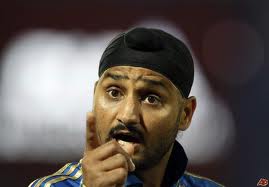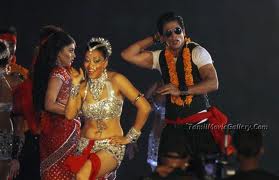WORLD CHAMPIONS !
Rome wasn't built in a day, neither was Team India. The process that was started around 10 years back, under Captaincy of Sourav Ganguly, has reached its peak under the Leadership of Mahendra Singh Dhoni. The process saw its lowest point at 2007 world cup when Team India thrashed out in league matches. Come 2011 and I can say with very much pride that INDIA IS WORLD CHAMPION after 28 years! The warriors of team India who Changed the game and made India proud:
MS Dhoni: Emperor of World
Midas Singh Dhoni touches and converts in Gold- 24 carat. He is in true sense the greatest leader(!) India has ever produced. Picture this: 114 for 3, India need another 160 odd runs with 6 runs per over. MS Dhoni with poor run with bat throughout WC. And boy, he promotes himself up to carry on left- right batting combination against wild Malinga and unplayable Murali.
How many people would come at that situation when your team is under huge pressure to rebuild innings that too in Big World Cup Final, your own form is the worst in career and people are talking about your position in the side, opponents are high on confidence (and perhaps skills), 121 crore fans expecting you to Win from bottom of their heart and none another than Yuvraj the best player in the tournament is waiting in dressing room!
In fact, if Dhoni had not come, it would have been a safe game for Dhoni himself. But a real warrior Dhoni is, did it, not to prove anything to anyone but to prove himself. This was the occasion, this was the challenge, his team required him the most, but nobody expecting him to confront this situation as Yuvraj was the option available, but Dhoni had different plans, he decided to took all the responsibility on his shoulders and finished the mission with unbeaten 91, smashing winning six.. This event separates him from a good captain to the greatest leader. Now, he has gone beyond captaincy. He is being a captain with great success in the past as he has won Twenty-20 World Cup, 1st Ranking in Test Cricket, IPL Championship, Champions League Trophy and remember he is yet to loose a series in Test cricket. But, I think this is not just a captaincy, he is a great borne leader and he built a team knowing strengths and weaknesses of his team and opponents. He took bold decisions through out the World cup too. Many a times he was criticized for his experiments when few went wrong, but he is great person to admit his mistakes. In fact he learned from his mistakes every now and then. But the best thing is that he never frightened to commit a mistake. People call Dhoni is Lucky, I don't think so. Dhoni writes his own luck and that is what he has done in last 4 years for India!
Dhoni- the Emperor in India Cricket.
Yuvraj Singh:
Yuvi gives Indian team the aggression- I say arrogance- that a World Champion team needs to carry with them. Not to show off, but to lift the spirit of their own team! And don't forget, arrogance is acceptable when you are MoM for 4 matches and Player of tournament in World Cup! It suits you only when you score 362 runs with a massive average of 90.50 and claim 15 wickets in World cup tournament!
This is Yuvraj for you, 'Yuvraj' of Empire India!
Youngistaan:
The brilliance of Gautam Gambhir, Virat Kohali, Suresh Raina, R Ashwin was shown whenever required. Who can forget Gambhir's 97 runs- chasing 275- in WC final- when Sehwag and Sachin got out within first 6 overs? Probably Gambhir has played greatest inning of his life.
Virat, to whom India looks as future captain is good batter, athletic fielder. And Suresh Raina- my favorite- is superb finisher the best fielder and partnership breaking bowler.
You can invest your hopes in Generation next of Indian Empire!
Zaheer Khan:
To build an empire, you should be the best in all departments. Exception is Indian bowling, which is faaaar away from tag of best bowling unit. But standing out tall is Zaheer. He claimed 21 wickets- sharing top wicket taker spot in WC with Shahid Afridi. He led the attack from front and produced match wining performances- produced crucial wickets just when needed. All other bowling is still a big concern- though empire is built!
 |
| Mission Accomplished |
MS Dhoni: Emperor of World
 |
| Leading from the front |
How many people would come at that situation when your team is under huge pressure to rebuild innings that too in Big World Cup Final, your own form is the worst in career and people are talking about your position in the side, opponents are high on confidence (and perhaps skills), 121 crore fans expecting you to Win from bottom of their heart and none another than Yuvraj the best player in the tournament is waiting in dressing room!
In fact, if Dhoni had not come, it would have been a safe game for Dhoni himself. But a real warrior Dhoni is, did it, not to prove anything to anyone but to prove himself. This was the occasion, this was the challenge, his team required him the most, but nobody expecting him to confront this situation as Yuvraj was the option available, but Dhoni had different plans, he decided to took all the responsibility on his shoulders and finished the mission with unbeaten 91, smashing winning six.. This event separates him from a good captain to the greatest leader. Now, he has gone beyond captaincy. He is being a captain with great success in the past as he has won Twenty-20 World Cup, 1st Ranking in Test Cricket, IPL Championship, Champions League Trophy and remember he is yet to loose a series in Test cricket. But, I think this is not just a captaincy, he is a great borne leader and he built a team knowing strengths and weaknesses of his team and opponents. He took bold decisions through out the World cup too. Many a times he was criticized for his experiments when few went wrong, but he is great person to admit his mistakes. In fact he learned from his mistakes every now and then. But the best thing is that he never frightened to commit a mistake. People call Dhoni is Lucky, I don't think so. Dhoni writes his own luck and that is what he has done in last 4 years for India!
Dhoni- the Emperor in India Cricket.
Yuvraj Singh:
Yuvi gives Indian team the aggression- I say arrogance- that a World Champion team needs to carry with them. Not to show off, but to lift the spirit of their own team! And don't forget, arrogance is acceptable when you are MoM for 4 matches and Player of tournament in World Cup! It suits you only when you score 362 runs with a massive average of 90.50 and claim 15 wickets in World cup tournament!
This is Yuvraj for you, 'Yuvraj' of Empire India!
Youngistaan:
 |
| Dream come true! |
Virat, to whom India looks as future captain is good batter, athletic fielder. And Suresh Raina- my favorite- is superb finisher the best fielder and partnership breaking bowler.
You can invest your hopes in Generation next of Indian Empire!
Zaheer Khan:
To build an empire, you should be the best in all departments. Exception is Indian bowling, which is faaaar away from tag of best bowling unit. But standing out tall is Zaheer. He claimed 21 wickets- sharing top wicket taker spot in WC with Shahid Afridi. He led the attack from front and produced match wining performances- produced crucial wickets just when needed. All other bowling is still a big concern- though empire is built!



















